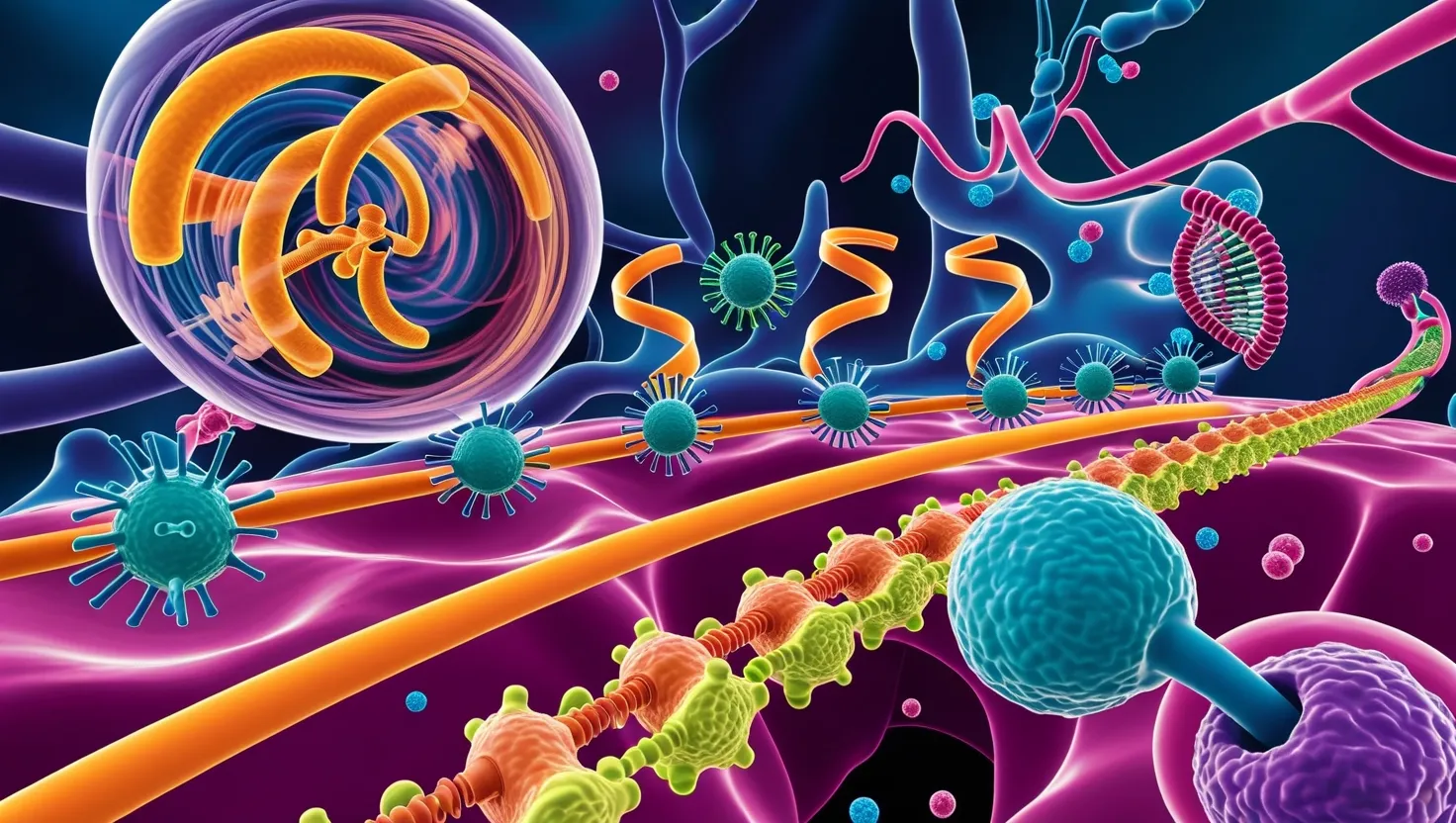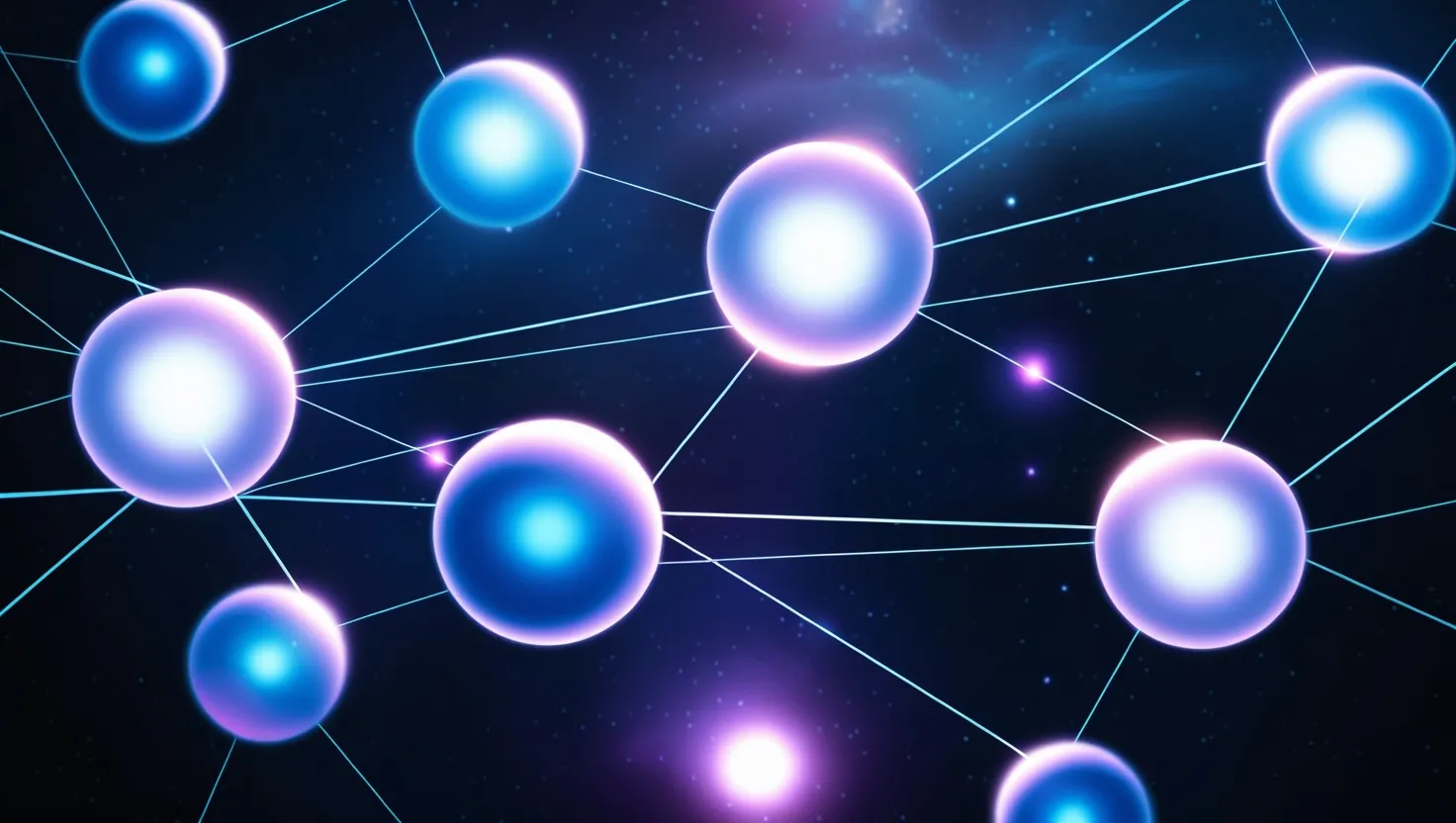Cells are incredible structures, bustling with activity and filled with tiny machines that perform essential tasks for life. Just imagine a factory, but instead of a large warehouse filled with human workers and heavy machinery, we have a microscopic world where proteins work tirelessly, relentlessly performing their duties. These molecular machines are the unsung heroes of biology, running operations that are fundamental to our existence.
One of the most fascinating molecular machines in our cells is ATP synthase. This remarkable rotary motor is responsible for producing adenosine triphosphate (ATP), the energy currency of our cells. It operates much like a turbine, spinning to convert the energy from a proton gradient into the chemical energy stored in ATP. Did you know that this machine can produce around 100 ATP molecules per second? Its efficiency surpasses human technologies, showcasing a level of engineering that is hard to fathom. Just think about that for a moment—inside your body, at this very moment, ATP synthase is working at breathtaking speed, providing the energy necessary for your cells to function properly.
Next, let’s take a look at DNA helicase, often overlooked in discussions of cellular machinery. This is the enzyme responsible for “unzipping” the DNA double helix, allowing our genetic code to be read and replicated. It’s like a pair of tiny scissors that carefully separates the strands of DNA, preparing them for replication or transcription. What makes helicase particularly interesting is its speed; it can unzip DNA at an astonishing rate, processing approximately 1,000 bases per second. This is crucial during cell division when accurate and quick DNA replication is necessary.
Speaking of transportation within the cell, kinesin is another molecular machine that captures our attention. These proteins resemble tiny locomotives, “walking” along microtubules to transport cellular cargo. They’re essential for moving organelles, vesicles, and proteins to their correct locations within the cell. Picture this: kinesin takes its cargo on a journey along the cell’s highways, ensuring that everything is delivered on time. How mind-blowing is it that such an intricate transport system exists at a molecular level?
Ribosomes, often dubbed the protein factories of the cell, also deserve a moment in the spotlight. These complex assemblies of proteins and RNA are where the magic of protein synthesis occurs. Imagine ribosomes as assembly lines in a factory where raw materials are transformed into final products. They read messenger RNA (mRNA) to synthesize proteins by linking amino acids together in the correct sequence. The sheer number of proteins—over 300 distinct entities—could make you feel small in comparison to their complexity. Each ribosome operates continuously, churning out proteins that are vital for cellular function, growth, and repair.
Nuclear pore complexes (NPCs) are another crucial aspect of cellular machinery that often goes unnoticed. These structures regulate the flow of molecules between the nucleus and the cytoplasm. Imagine them as security guards at a high-security entrance, controlling what can enter or exit the nucleus. They ensure that proteins and RNA are selectively transported, maintaining the right environment for genetic material to operate efficiently. It’s astonishing to think about how the NPC manages this traffic, balancing the needs of the nucleus and the cytoplasm at all times.
Then we have the spliceosome, a complex of proteins and RNA that performs the essential task of editing mRNA. Before mRNA can be translated into proteins, introns (non-coding sequences) must be removed, and exons (coding sequences) spliced together. The spliceosome is a master of precision, ensuring that only the right sequences are included in the final mRNA product. This intricate process can affect gene expression and ultimately influence an organism’s traits. Without the spliceosome, our genetic blueprint would be far less efficient, leading to a cascade of potential problems in protein production.
Lastly, let’s not forget about the proteasome, the cell’s recycling center. This fascinating structure breaks down and eliminates misfolded or damaged proteins, ensuring that only functional proteins remain. It’s similar to a waste management system, taking care of the cellular refuse to keep everything running smoothly. With its ability to handle a diverse range of protein substrates, the proteasome plays a vital role in maintaining cellular health and preventing diseases related to protein aggregation.
“RNA is the key to the living world,” famously said molecular biologist Richard J. Roberts. This quote reminds us that the workings of molecular machines, especially those associated with RNA, are crucial for life as we know it.
By exploring these extraordinary molecular machines, we gain a deeper appreciation for the complexity and elegance of cellular functions. Each machine, from ATP synthase to the proteasome, showcases nature’s genius in engineering intricate systems that work harmoniously to sustain life.
What if we could harness the principles behind these molecular machines for technological advancements? The potential for nanotechnology inspired by biological systems could revolutionize everything from drug delivery systems to energy production. The intricacies of molecular machinery might hold the keys to developing bio-inspired technologies that improve our lives.
In closing, the molecular machines within our cells are not just functional entities; they are a testament to the complexity of life at the most fundamental level. Each protein complex operates with a purpose, contributing to the intricate dance of life that keeps our bodies functioning day in and day out. Remember, the next time you feel your energy wane or face a challenge in your daily activities, countless molecular motors are working tirelessly behind the scenes, ensuring that life continues seamlessly.






